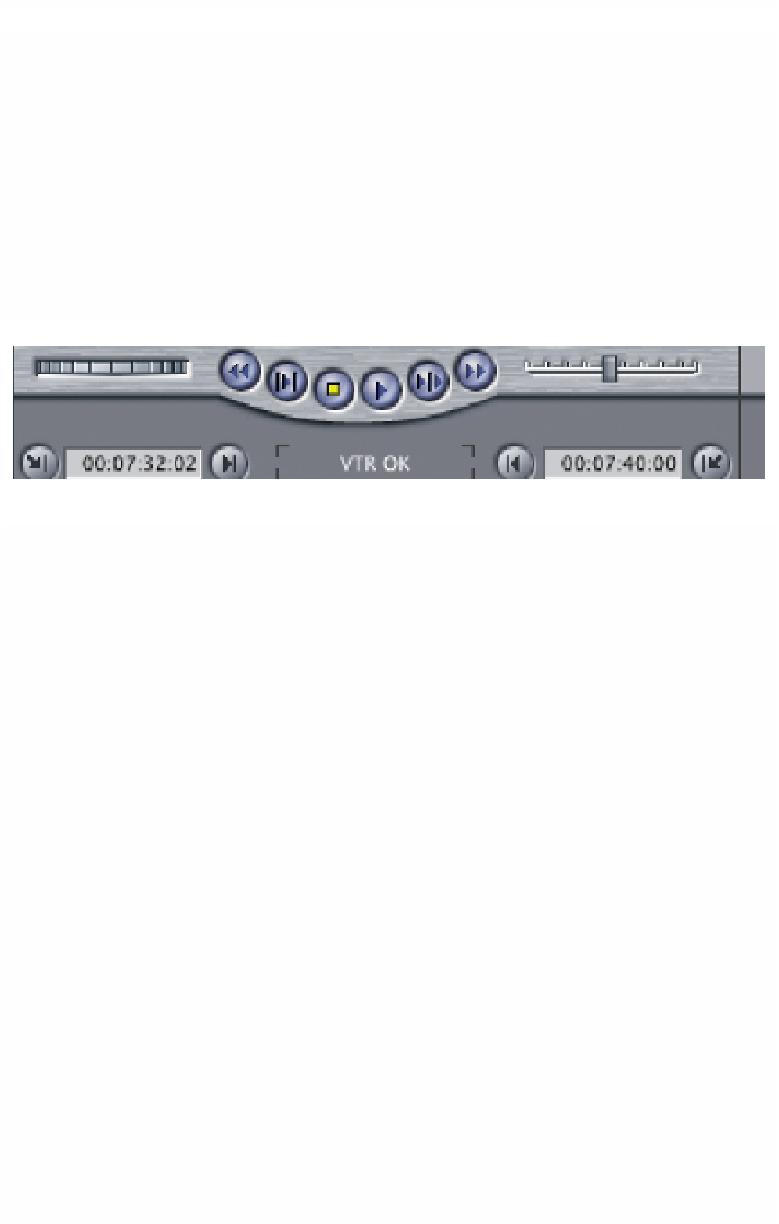Graphics Programs Reference
In-Depth Information
until the maximum speed is attained after five taps. Likewise, when using the
letter L the tape will shuttle forward in increments until a maximum
speed is achieved after five taps.
■
4
When you get to the point where you want the capture to begin press
the letter 'i' - this will mark the 'in' point. Similarly, press the letter 'o'
to mark the 'out' point. If you look to the bottom of the Capture
window, the timecode reference for the marked 'in' and 'out' points
will be displayed.
'in' point
'out' point
Note:
when marking 'in' and 'out' points you can mark the points on-the-fly. This
means you can mark 'in' and 'out' points by pressing the letters 'i' and 'o' at the
appropriate points while the tape is running. If you prefer, while the tape is
playing, hold down the letter 'i' and release it when you get to the point where
you wish the 'in' point to be marked. The same applies for the 'out' point. Hold
down the letter 'o' and release it to mark the 'out' point. Final Cut Pro is flexible
in that the same result can be achieved in a variety of ways.
■
5
Once the 'in' and 'out' points have been marked press
the Clip button at the bottom of the Capture Window.
You will then be prompted to name the clip.
■
6
Name the clip and press OK. The Mac will then instruct the deck/
camera to cue up the clip which will then be captured to disk and
placed into the Browser for you to access.
By repeating this process you can capture as many clips as you wish.
Capture Now
An alternative way to capture clips is to use the Capture Now facility. This is a
simple method that does not require you first to mark the 'in' and 'out' points.











































